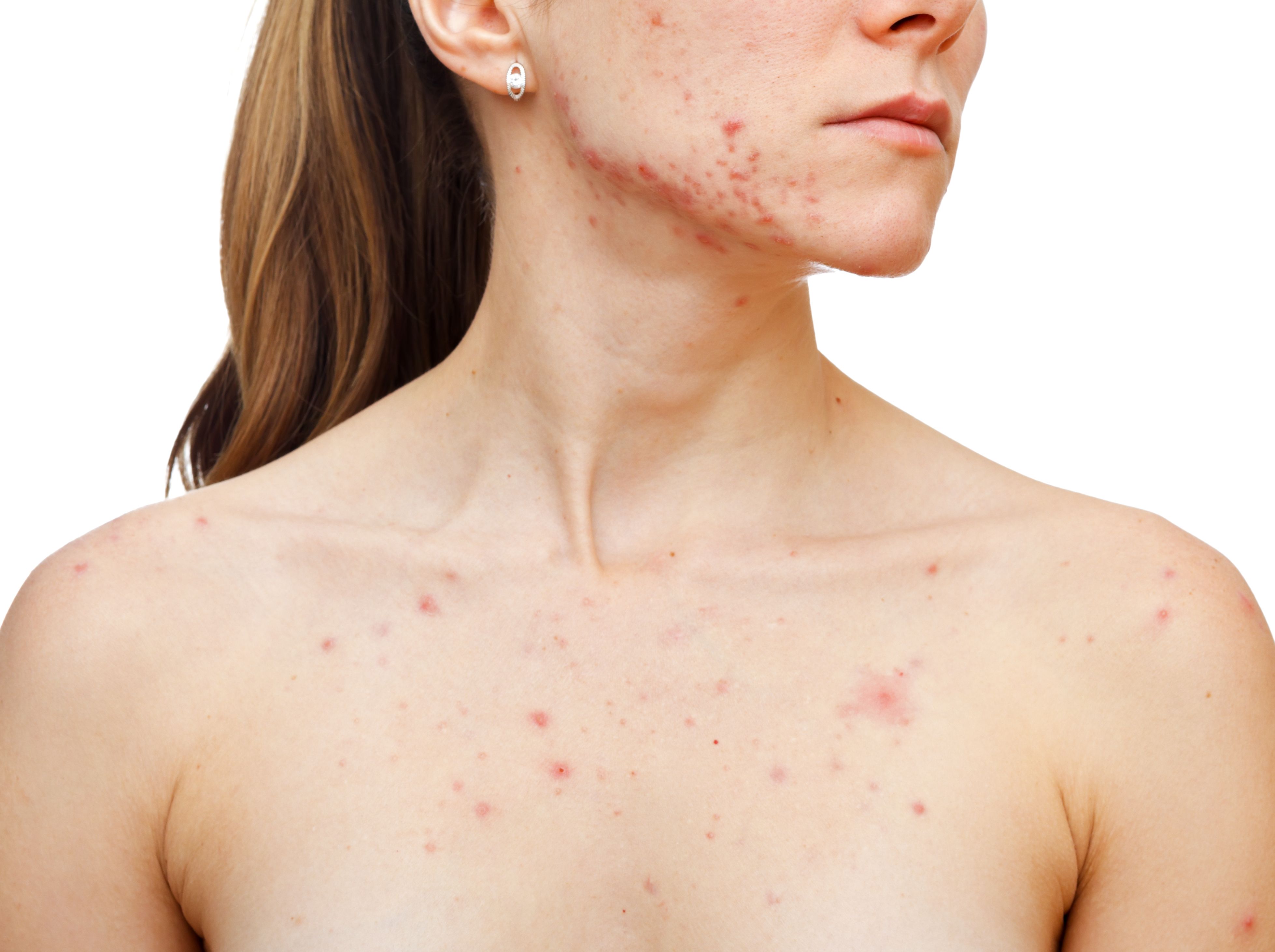- Case-Based Roundtable
- General Dermatology
- Eczema
- Chronic Hand Eczema
- Alopecia
- Aesthetics
- Vitiligo
- COVID-19
- Actinic Keratosis
- Precision Medicine and Biologics
- Rare Disease
- Wound Care
- Rosacea
- Psoriasis
- Psoriatic Arthritis
- Atopic Dermatitis
- Melasma
- NP and PA
- Skin Cancer
- Hidradenitis Suppurativa
- Drug Watch
- Pigmentary Disorders
- Acne
- Pediatric Dermatology
- Practice Management
- Prurigo Nodularis
- Buy-and-Bill
Article
Acne treatment alternatives to know
Author(s):
It’s no secret that antibiotics have been successful in controlling most acne cases, but the need to limit antibiotic use means acne treatment protocols are starting to shift. William James, M.D. emphasizes two alternatives dermatologists should turn to when treating patients with acne.
“We’re trying to limit the amount of antibiotics people are taking, as well as the number of people who are taking antibiotics,” says Dr. James, "There’s been a major push over the past few years to do that. So, it changes how we treat people, particularly women in many cases.” (OsckayBence - stock.adobe.com)

In dermatology the first line of defense against acne vulgaris has largely been the use of antibiotics. However, the need to limit antibiotic use means acne treatment protocols are starting to shift.
“We’re trying to limit the amount of antibiotics people are taking, as well as the number of people who are taking antibiotics,” says William James, M.D., professor and chair of dermatology at Penn Medicine. “There’s been a major push over the past few years to do that. So, it changes how we treat people, particularly women in many cases.”
It’s no secret that antibiotics have been successful in treating and controlling most acne cases. The efficacy has led dermatologists to be among the highest prescribers of antibiotics. However, frequent and long-term antibiotic use can also present problems, such as the development of antibiotic resistance in patients over time. Additionally, existing research indicates long-term use can also be associated with irritable bowel syndrome. Consequently, the American Academy of Dermatology’s standing recommendation is to limit antibiotic use to less than three months.
To abide by this suggestion and to comply with the non-antibiotic treatment paradigm shifts, says Dr. James who addressed acne treatment options at the American Academy of Dermatology’s (AAD) 2019 spring meeting in Washington, D.C., dermatologists must consider alternative therapies. In particular, he says, providers should examine spironolactone or isotretinoin as options to treat moderate-to-severe acne.
SPIRONOLACTONE FOR ACNE
Originally designed as a high blood pressure medication, spironolactone is frequently used off-label to treat moderate-to-severe acne in women. It’s inappropriate for men because it blocks the function of male hormones.
“This is an excellent medication for acne, and many women respond very well to it,” he says. “And, dermatologists should be more comfortable prescribing it.”
According to existing research, a 200-mg daily dose - lower than levels needed to control high blood pressure - has been shown to reduce acne levels equivalent to those seen with antibiotics. Patients treated with spironolactone also experience low relapse rates, and few report discontinuing use.
Overall, spironolactone is well tolerated with few side effects, according to Dr. James. Fatigue, increased urination, irregular periods, breast tenderness, muscle pain and irregular heart beat are possible. Additionally, dermatologists should ask patients if they have low blood pressure before writing the prescription.
Despite evidence of efficacy, however, some dermatologists remain reticent to recommend spironolactone, he says. Based on older research, the medication carries a black box label warning, cautioning providers that the medication is associated with several types of tumors. However, the warning is based on studies that included doses from 10-to 500-times the highest dose given to humans, Dr. James says. And, additional research has shown little-to-no evidence that the medication causes tumors.
Sharing this updated information, Dr. James says, will, hopefully, encourage more dermatologists to pivot toward spironolactone rather than antibiotics.
“This discussion is alerting dermatologists that spironolactone is available and safe,” Dr. James says. “It’s been around for many years, so it’s not new. But it’s a matter of trying to make people aware of these newer studies that indicate its safety and efficacy so more people feel comfortable using it.”
ISOTRETINOIN FOR ACNE
Previously known on the market as Accutane, isotretinoin has been considered the topline in efficacy for treating acne, according to Dr. James. But, historically, it has not been the initial defense due to many concerns.
“In the past, if people weren’t responding to antibiotics, they might go to isotretinoin as a final effort to control acne,” he says. “Now, as dermatologists are trying to utilize antibiotics less and less, they’re turning to isotretinoin for more and more people.”
This move stems from recent research that shows patients treated with isotretinoin experience roughly the same level of efficacy as those who undergo an antibiotic regimen. Normally, patients receive a 120 mg/kg to 150 mg/kg dose, and they must complete the full course even if they achieve 100% acne clearing. However, lower beginning doses can be recommended to help side-step initial acne flares. Researchers have also found the body best absorbs isotretinoin when patients take it with a high-fat meal.
Updated studies also reveal a need to potentially change conventional complete blood panel monitoring practices. Traditionally, dermatologists have performed these tests as frequently as once a week. Instead, new data indicates lipids, liver function and triglycerides can be checked roughly once a month. This change is both convenient and cost-effective for patients.
Ultimately, Dr. James says, he wants dermatologists to have new information about how to best treat acne.
“I think it would be good to consider spironolac tone when treating women for acne. You’ll be able to improve outcomes for a wider array of women while limiting the use of antibiotics. And, I think of isotretinoin similarly,” he says.





